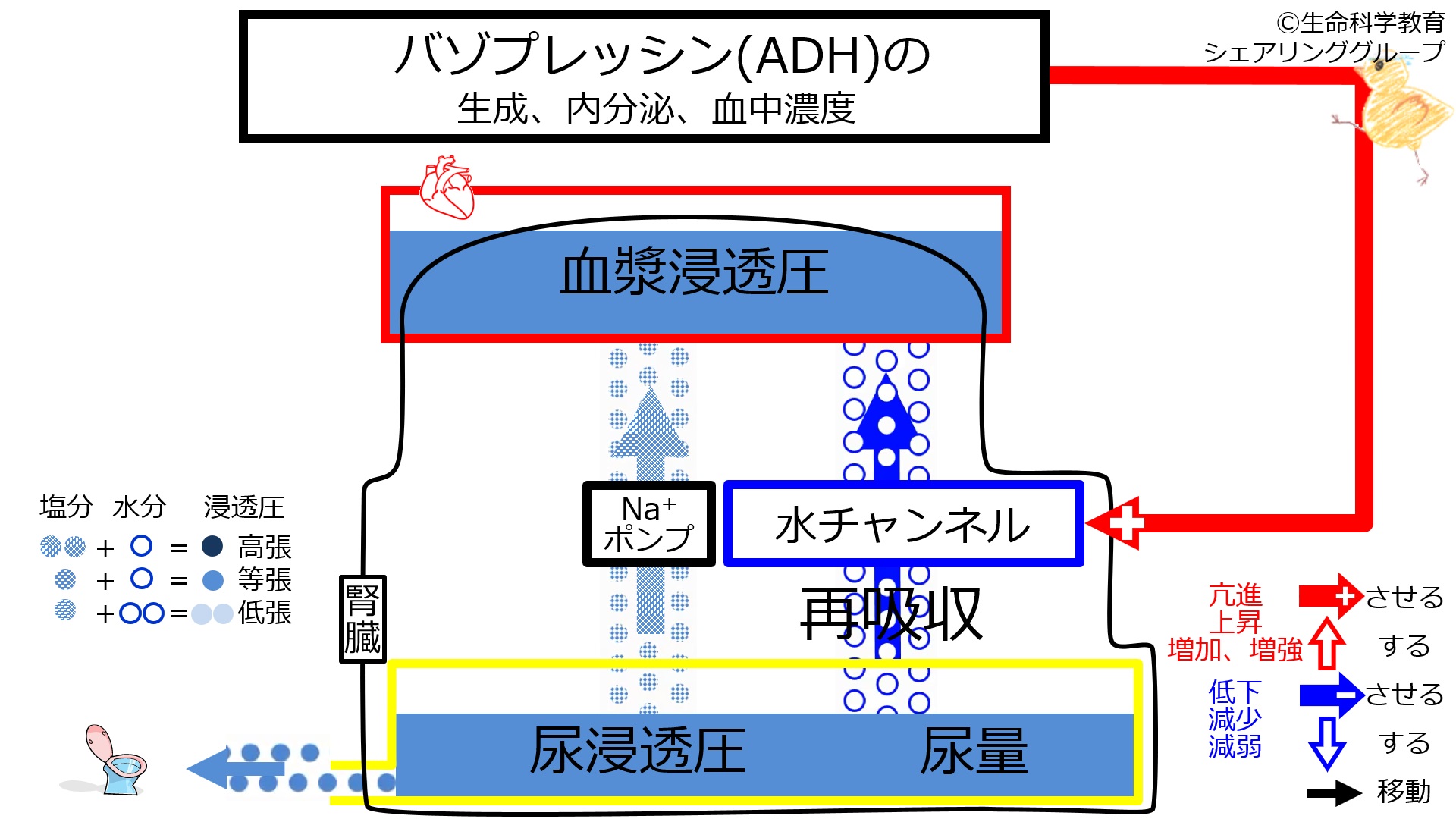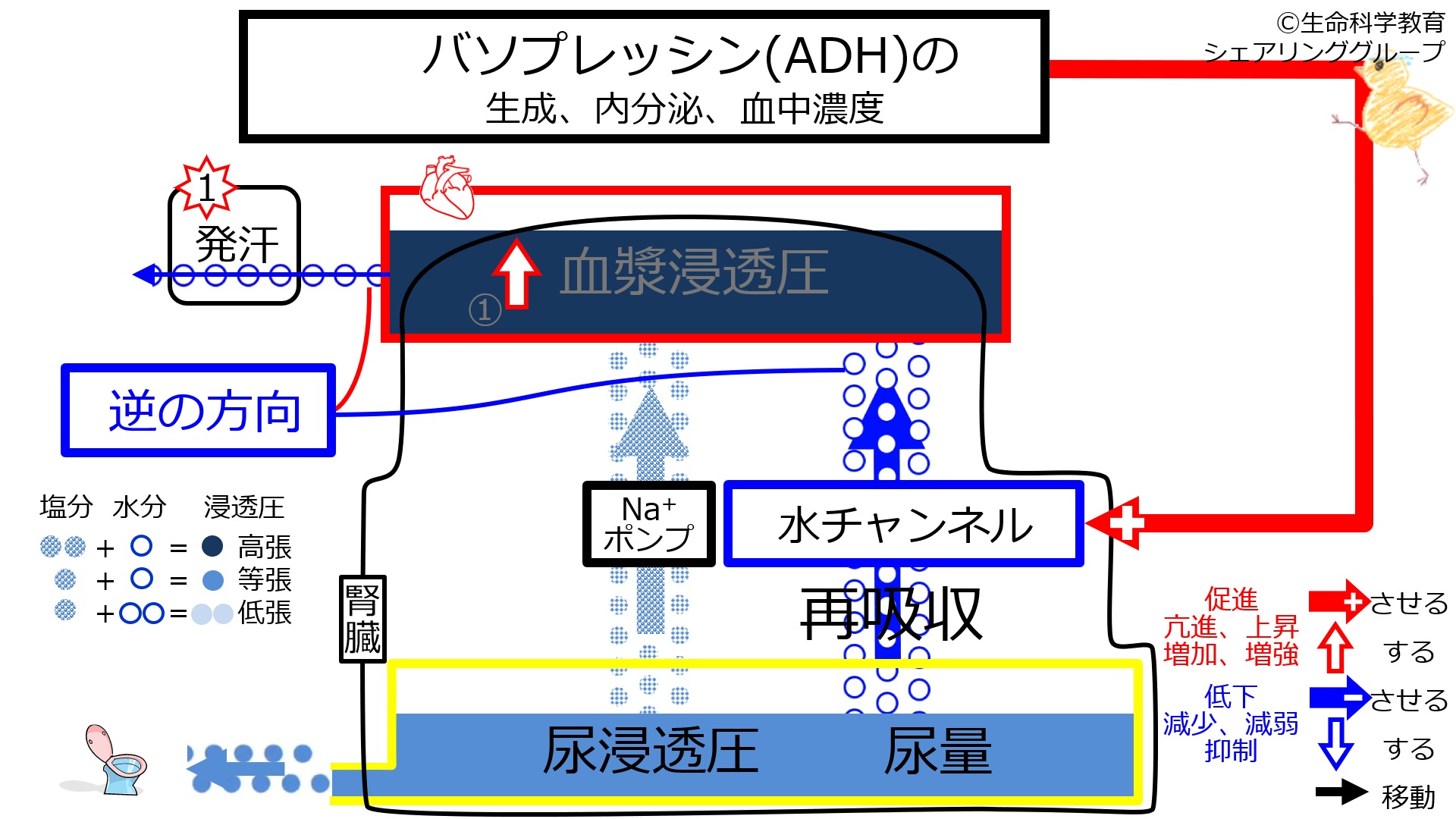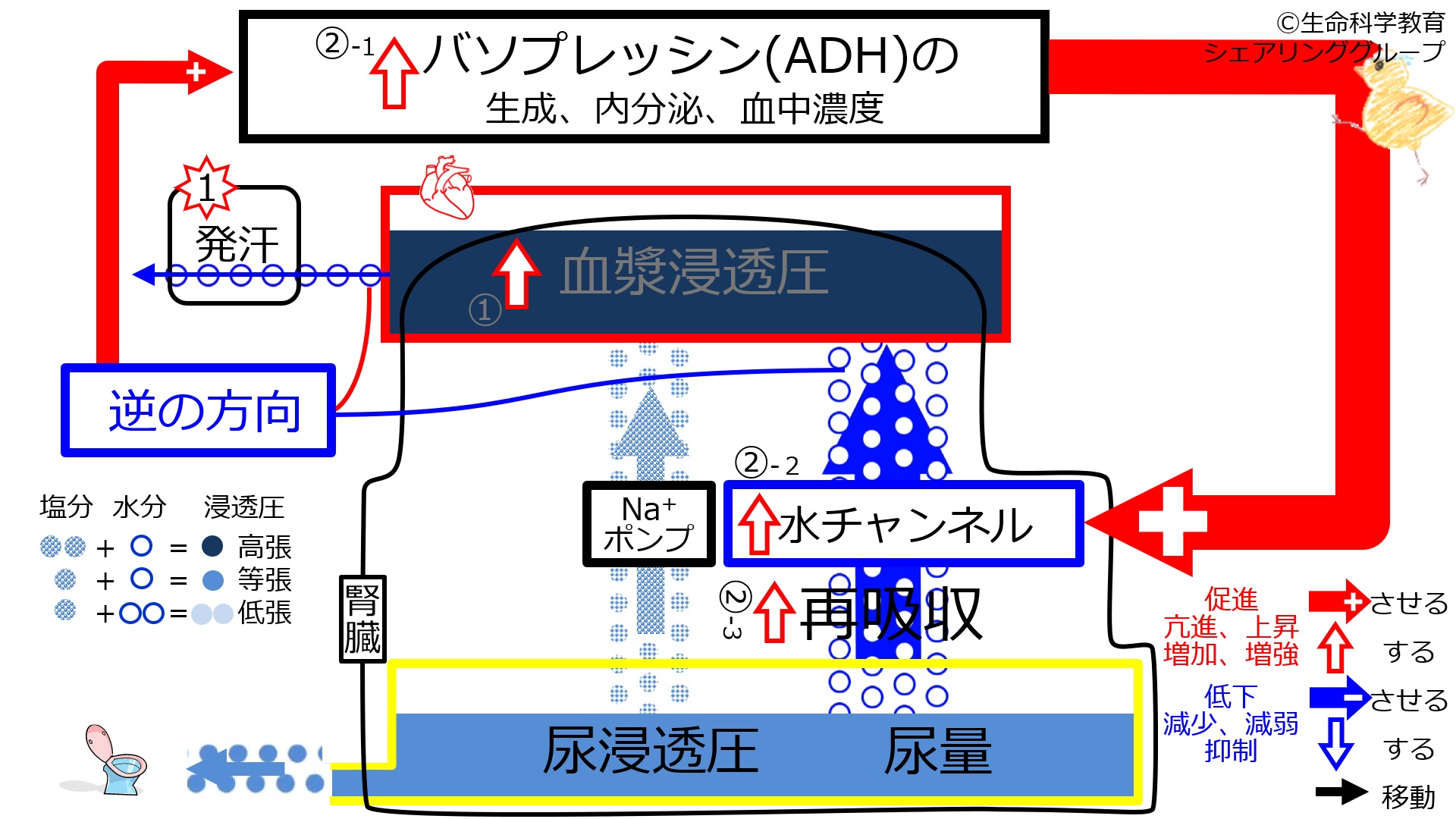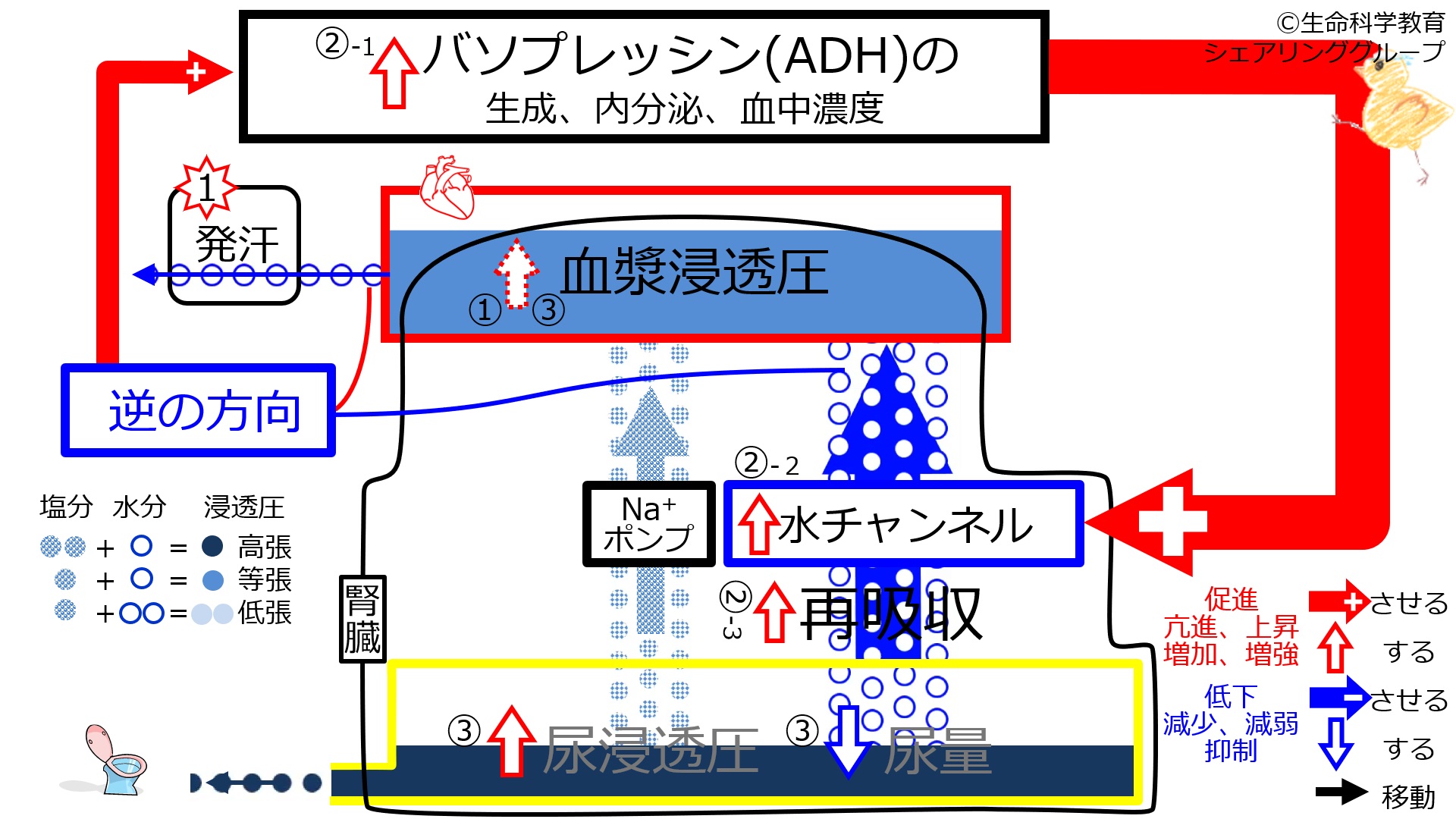「SHolroydAtWeilCornellMedQatar/Endocrinology/VasopressinADH/ControlToSweating」の版間の差分
編集の要約なし |
編集の要約なし |
||
| 60行目: | 60行目: | ||
//LEVEL:3 | //LEVEL:3 | ||
//RAND | //RAND | ||
When you sweat the plasma osmolarity {decreases~=increases}. This has the effect of {~=increasing~decreasing} the release ADH. This in turn {~=increases~decreases} the production of aquaporins by the nephron causing {~=increased~decreased} water reabsorption. Urine osmolarity will {~=increase~decrease} while volume will {increase~=decrease}. This will {~=decreasing~increasing} plasma osmolarity {~=returning to normal~ | When you sweat the plasma osmolarity {decreases~=increases}. This has the effect of {~=increasing~decreasing} the release ADH. This in turn {~=increases~decreases} the production of aquaporins by the nephron causing {~=increased~decreased} water reabsorption. Urine osmolarity will {~=increase~decrease} while volume will {increase~=decrease}. This will {~=decreasing~increasing} plasma osmolarity {~=returning to normal~separating from normal}. | ||
2019年5月21日 (火) 15:39時点における版
| Sweating will increase plasma osmolarity. This will in turn lead to a increase in the synthesis, secretion and blood concentration of ADH. |
発汗前の動画
Prior to sweating we assume our subject is in homeostasis with normal plasma and urine osmolarities and volumes.
発汗直後、調節前の動画
Steps 1 and 2: The subject sweated. Water will leave the plasma and its osmolarity will increase. Sweating will increase and the ADH/water channels/reabsorption of water by the kidney will decrease plasma osmolarity, having the opposite effect. Thus, in this case with high plasma osmolarity, the effect of ADH/water channels/reabsorption would be too little.
発汗に対してADHが亢進した直後の動画
Steps 3 and 4: With too little effect of ADH/water channels/reabsorption, the negative feedback increases (the synthesis, secretion, and blood concentration of) ADH. The ADH-facilitating effect on the water channels will increase, increasing the number of water channels. This increases the reabsorption of water by the kidney.
発汗に対してADHが亢進した後の血漿、尿の2次的変化の動画
Step 5: The ratio of Na+ to water reabsorption by the kidney decreases. This means plasma osmolarity decreases. The decreased plasma osmolarity from sweating will decreae returning to normal.
Because a lower ratio of Na+ is reabsorbed the fluid left in the tubule now has a higher osmolarity. The increase in the number of water channels increases water reabsorption so there is less water. So overall the urine becomes high concentration and low volume.
Challenge Quiz
<GIFT> //LEVEL:2 //RAND The negative feedback reaction to an increased sweating is a(n) {~=increase~decrease} of ADH secretion.
//LEVEL:3 //RAND The negative feedback reaction to an increased sweating is a(n) {~=increase~decrease} of aquaporin channels in the kidney.
//LEVEL:2 //RAND The negative feedback reaction to an increased sweating is a(n) {~=increase~decrease} in water reabsorption by the nephron.
//LEVEL:3 //RAND The negative feedback reaction to an increased sweating is a(n) {increase~=decrease} in urine volume.
//LEVEL:3 //RAND The negative feedback reaction to an increased sweating is a(n) {~=increase~decrease} of urine osmolarity.
//LEVEL:3 //RAND The negative feedback reaction to an increased sweating is a(n) {increase~=decrease} of plasma osmolarity.
//LEVEL:3 //RAND When you sweat the plasma osmolarity {decreases~=increases}. This has the effect of {~=increasing~decreasing} the release ADH. This in turn {~=increases~decreases} the production of aquaporins by the nephron causing {~=increased~decreased} water reabsorption. Urine osmolarity will {~=increase~decrease} while volume will {increase~=decrease}. This will {~=decreasing~increasing} plasma osmolarity {~=returning to normal~separating from normal}.




